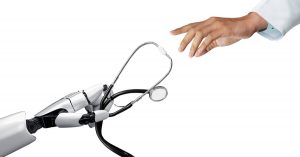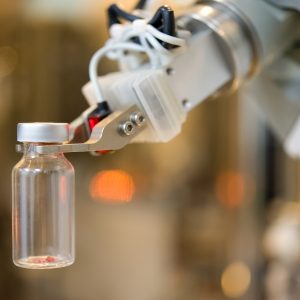Estimated reading time: 2 minutes
Businesses, Institutions, and Government departments are looking to accomplish tasks and keep up with social distancing mandates through the usage of robots, drones, and even automated devices to combat this COVID-19 pandemic. Healthcare workers, especially, are working around the clock with an intense workload to fight this virus.  With an alarming number of cases being catalogued and reported, our world is in dire need of millions more staffed individuals to achieve a foundation for global health targets. Through modernizing digital technology for Healthcare environments, staff members are able to deliver advanced and disruptive methods that can bring back a sense of normalcy.
With an alarming number of cases being catalogued and reported, our world is in dire need of millions more staffed individuals to achieve a foundation for global health targets. Through modernizing digital technology for Healthcare environments, staff members are able to deliver advanced and disruptive methods that can bring back a sense of normalcy.
Through the use of sensor-enabled automated devices, workers can maintain situational awareness of their workplace environments, by communicating with co-workers remotely, in an effort to limit the face to face interactions that take place. At sites where people are still going into work on a daily basis, robots can help enforce social distancing cues as well. Mobile robots can be utilized for temperature measurement in public areas and ports of entry to make sure every employee can be covered. Thermal sensors, on remotely operated bots, can increase the efficiency and coverage of screening, taking into account how many people are monitored in the workplace.
 When it patient-focused centers, obviously these devices must comply with HIPAA regulations. With drones, of course, practitioners must be sure they have secured the most accurate and up-to-date licensing and certifications to operate such hardware. Our dedicated Healthcare officials are working with a multitude of factors that contribute to human error, and they can be as simple as lack of sleep. Human error, due to a non-automated work environment, can take place while working on shifts when a highly-tenured staff member is stuck completing administrative tasks instead of patient care.
When it patient-focused centers, obviously these devices must comply with HIPAA regulations. With drones, of course, practitioners must be sure they have secured the most accurate and up-to-date licensing and certifications to operate such hardware. Our dedicated Healthcare officials are working with a multitude of factors that contribute to human error, and they can be as simple as lack of sleep. Human error, due to a non-automated work environment, can take place while working on shifts when a highly-tenured staff member is stuck completing administrative tasks instead of patient care.
- Sleep Deprivation
- Stress & Mental Exhaustion
- Physically Demanding Tasks
- Repetitive Routes
- Varying Shift Schedules
- and so much more
Assistive Technologies and Robots, or better known as ‘COBOTS’, are able to reduce the risk of health workers by minimizing any and all in-person contact. Robotic arms on wheels are being introduced into this industry as well.  A fan-favorite for the manufacturing field is jumping over to hospitals to take mouth swabs, perform ultrasounds, and listen to any irregularities found in heart beats. Some of the most normal and basis tasks completed by RNs and medical professionals can be now be done by COBOTs, fitted with cameras to reduce exposure of this viral infection. Universal Robots are also being utilized to undertake simple tasks such as: drawing blood, checking vitals, monitoring symptoms, and even handling hygienic patterns.
A fan-favorite for the manufacturing field is jumping over to hospitals to take mouth swabs, perform ultrasounds, and listen to any irregularities found in heart beats. Some of the most normal and basis tasks completed by RNs and medical professionals can be now be done by COBOTs, fitted with cameras to reduce exposure of this viral infection. Universal Robots are also being utilized to undertake simple tasks such as: drawing blood, checking vitals, monitoring symptoms, and even handling hygienic patterns.
Automation is definitely an indispensable piece of the Manufacturing Industry, but now more than ever the massive Healthcare realm can really benefit off of its presence.

